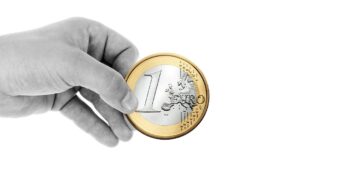Mastering Retirement Savings: Strategies for the Self-Employed
The landscape of retirement savings can be particularly challenging for the self-employed. Without the built-in structures and benefits like employer-sponsored 401(k) plans, freelancers, entrepreneurs, and contract workers must carefully navigate their path to a secure retirement. In this detailed guide, we explore effective strategies to help the self-employed master their retirement savings and secure a financial future.
Understanding the Importance of Retirement Planning for the Self-Employed
Many self-employed individuals relish the autonomy and flexibility their status provides. However, this freedom also comes with the sole responsibility for retirement planning. Unlike traditional employees who might rely on employer-matched contributions, the self-employed need proactive and strategic action to ensure they aren’t left vulnerable during their retirement years.
Choosing the Right Retirement Accounts
Solo 401(k)
The Solo 401(k) is a popular choice among solo entrepreneurs with no employees. This plan not only allows for high contribution limits (up to $61,000 in 2023, plus an additional $6,500 if you’re over 50), but also includes an employee and employer contribution component, maximizing the amount you can save annually.
Simplified Employee Pension (SEP) IRA
The SEP IRA offers a simplified way to contribute to your retirement savings, with contributions potentially up to 25% of your earnings or a maximum of $61,000 in 2023. This plan is best for those who want a straightforward, low-maintenance approach to saving for retirement.
Savings Incentive Match Plan for Employees (SIMPLE) IRA
For those with a small business or a few employees, the SIMPLE IRA allows self-employed individuals and their employees to contribute towards retirement. In 2023, the contribution limit is $14,000, with a catch-up contribution of $3,000 if you’re over 50.
Roth IRA and Traditional IRA
While these accounts offer lower contribution limits ($6,000 in 2023, plus a $1,000 catch-up contribution), they are a good choice for those starting out or as an addition to other retirement accounts. The choice between a Roth and Traditional IRA should be based on your current income and anticipated retirement tax bracket.
Implementing a Savings Strategy
Budgeting and forecasting are crucial components of a successful retirement plan. Setting a saving goal as a percentage of your income and automating your savings can greatly enhance your ability to fund your retirement accounts consistently. Many financial advisors recommend saving at least 15-20% of your net income for retirement.
Investing Wisely
Diversification is key when it comes to investing your retirement fund. A mix of stocks, bonds, and other investments can help mitigate risks and foster steady growth. For self-employed individuals without the bandwidth to research individual investments, low-cost index funds or a professionally managed portfolio tailored to your risk tolerance and time horizon can be a sensible choice.
Managing Retirement Savings Alongside Business Expenses
As business revenue fluctuates, balancing business expenses with retirement savings can be tricky. It’s important to maintain a detailed budget and keep emergency funds to avoid dipping into retirement accounts. Strategies such as separating personal and business finances and possibly employing a dedicated financial advisor can help manage finances effectively.
Understanding Tax Implications
Tax planning is integral to maximizing retirement savings benefits. Contributions to traditional retirement accounts like a Solo 401(k) or SEP IRA may reduce your taxable income, potentially placing you in a lower tax bracket. Staying updated with the latest tax laws or consulting with a tax professional is advisable for optimizing your contributions and withdrawals.
Planning for an Uncertain Future
The self-employed should also consider factors like healthcare costs and long-term care, which could significantly impact retirement funding. Exploring health insurance options, long-term care insurance, and other protective measures are vital components of a comprehensive retirement plan.
Conclusion
Mastering retirement savings requires the self-employed to be well-informed and proactive. By choosing the appropriate retirement accounts, implementing a robust saving strategy, investing wisely, and managing tax implications, you can secure your financial future. Remember, the path may be different for each individual, but the goal of a secure, fulfilling retirement is universal.
Beginning early, planning strategically, and adapting your plans as your circumstances and rules change will put you in the best position to enjoy the retirement you envision.



























































